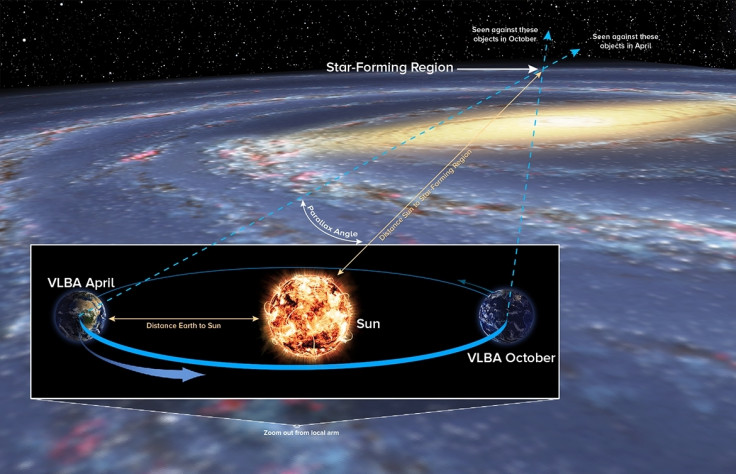Astronomers' record-breaking Milky Way measurement can help with galaxy mapping
The latest measurement came with the application of a 180-year-old technique.

After an unprecedented observation, astronomers have directly measured the distance from Earth to a star-forming region at the other end of the Milky Way galaxy. The distance of 66,000 light years goes way beyond the previous record for such measurement and could soon help scientists understand the extent of our galaxy.
The record-breaking measurement came with the application of a 180-year-old technique dubbed trigonometric parallax. It was first used in 1838 to measure the distance to a star in the constellation Cygnus.
The idea here revolves around measuring the relative change in the sky position of a celestial object by observing it from two distant points such as opposite sides on Earth's orbit around the Sun. Once the angle of position change has been noted, principles of trigonometry can be applied to measure the distance to the object in question. As National Radio Astronomy Observatory (NRAO) points out, smaller angle is indicative of greater distance.
That said, scientists calculated the distance to a star-forming region called G007.47+00.05 by observing the precise change in its position from the Very Long Baseline Array (VLBA) – a system of 10 radio telescope spread across North America, Hawaii, and the Caribbean. The observations were made in 2014 and 2015 and the findings were published in journal Science.
The distance measured – 66,000 light years – goes way past the bright centre of our galaxy, which is 27,000 light years away from our planet. It also breaks the previous record for parallax measurement, which was of about 36,000 light years.

As Milky Way is a spiral galaxy with many arms (one which has our solar system), it is difficult to map its structure, shape without traveling hundreds of thousands of light-years outwards to see its face. However, the idea of measuring the distance to star-forming regions like this one could help with the process of mapping.
In fact, scientists plan on using the same technique to get a complete picture of Milky Way over next 10 years, along with answers to other questions related to its actual shape and structure.
"Most of the stars and gas in our Galaxy are within this newly-measured distance from the Sun. With the VLBA, we now have the capability to measure enough distances to accurately trace the Galaxy's spiral arms and learn their true shapes," Alberto Sanna of the Max-Planck Institute for Radio Astronomy in Germany (MPIfR), said in the statement.





















